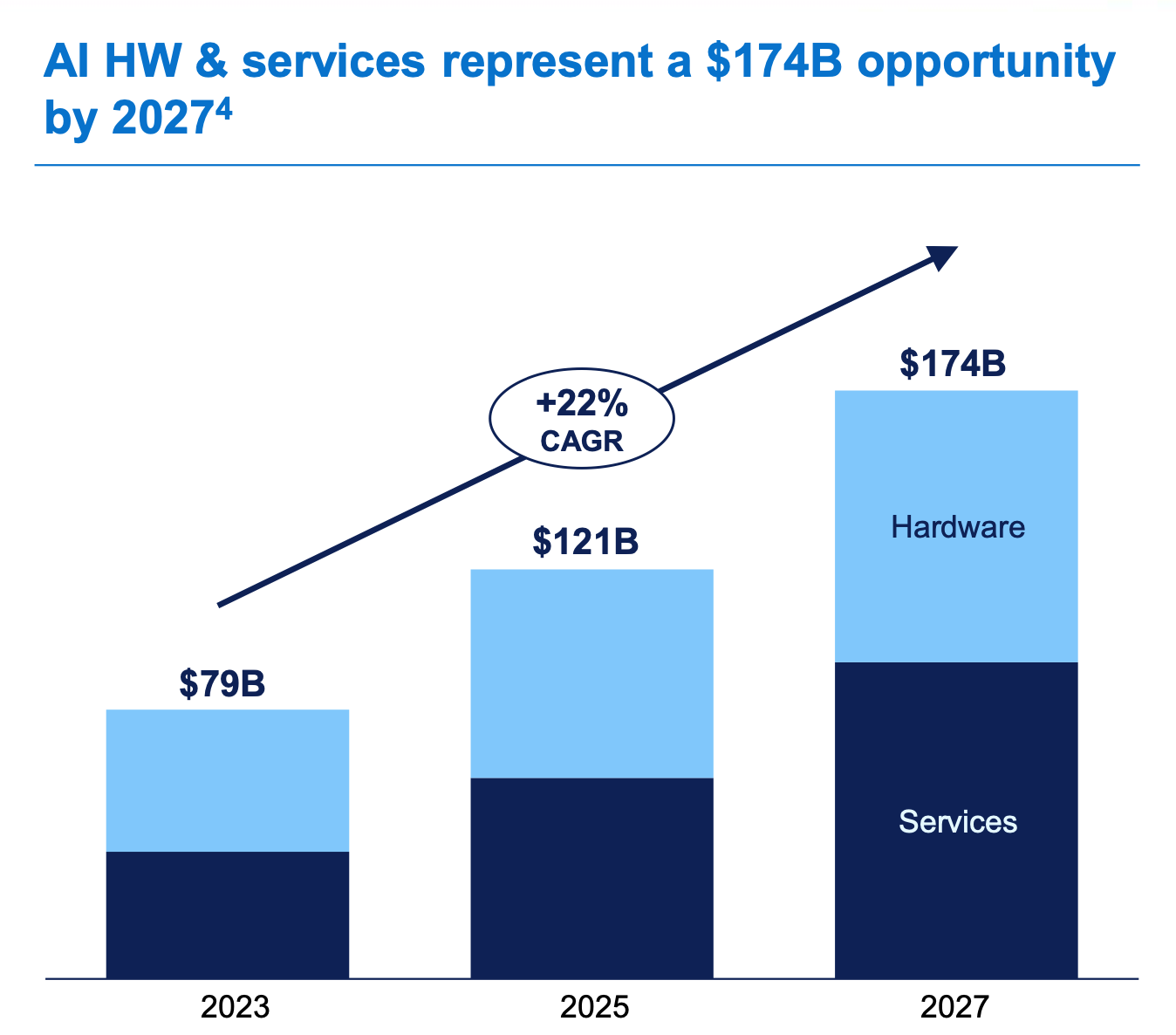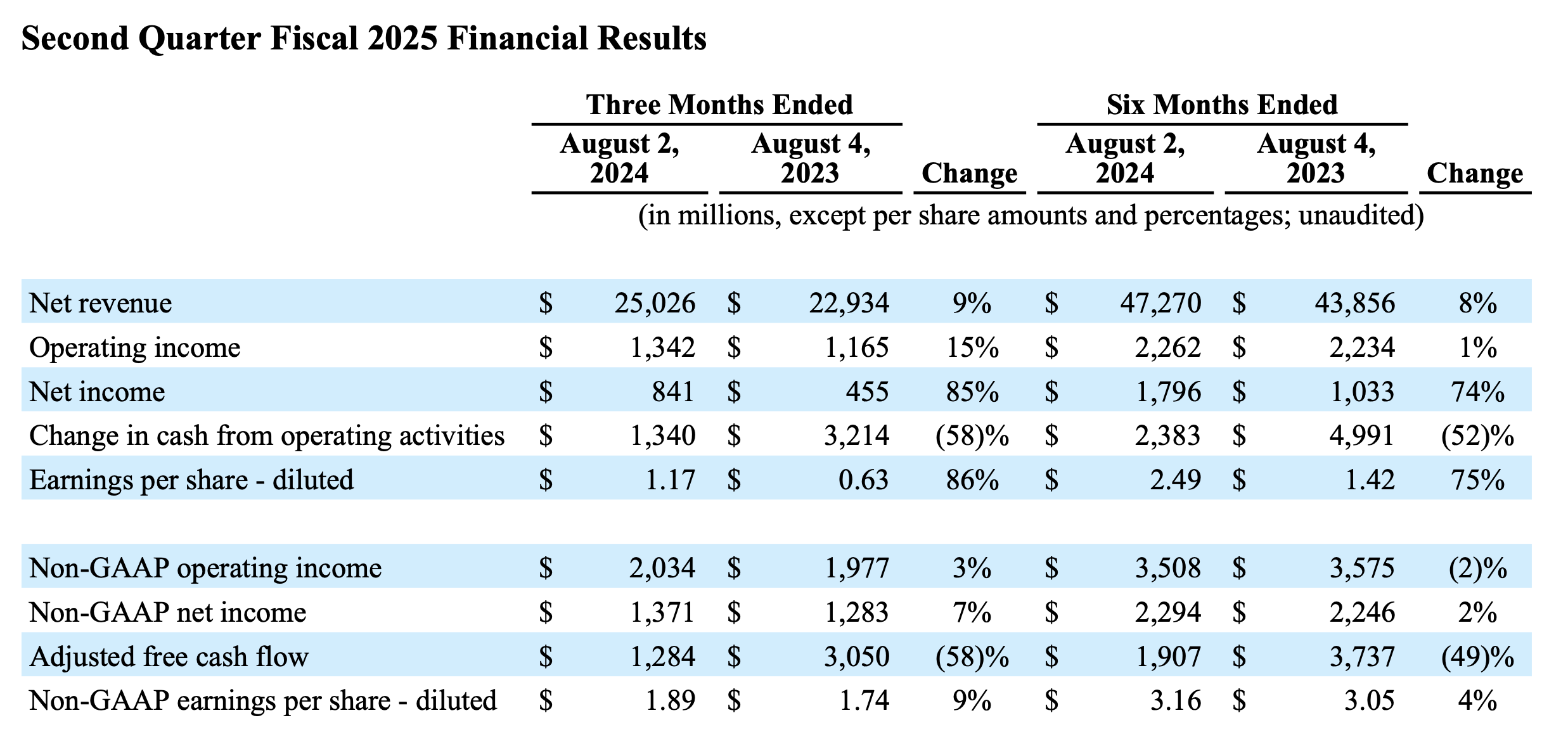
Believe in the trinity at the core of the AI market and you'll see why enterprises don't need to worry too much about digital gods. John Roese, Chief AI Officer and CTO, Dell Technologies, divides AI into three key markets - one of which is more or less focused on the creation of a digital superintelligence as powerful as a deity. And, of course, the "hypercluster" needed to summon it.
This is the "training" market, Roese says in a conversation with The Stack that quickly got metaphysical. He tells us players in this arena include “companies competing for the future of search advertising and social networking” with “very, very big, big revenue pools in play". The business of building digital demiurges involves names like Elon Musk and OpenAI, with hundreds of billions of dollars of revenue up for grabs.
Dell is already earning “multiple billions of dollars a quarter” in this space as it builds clusters for a “very limited number of customers”, the AI leader tells us. “There are probably 100 plus customers doing it on a very large scale,” he continues. “This market involves ‘creating gods’ by building artificial superintelligence (ASI) or artificial general intelligence (AGI)."
Roese's second market is “classical AI”, which he says is more about "bringing intelligence into physical infrastructure" than simply getting a chatbot to talk about “random things”. Solutions in this area often involve combinations of technologies, such as computer vision being used to interpret information, which is then handed to a GenAI system to be summarised. It's a business that Dell has been in for "many, many, many years" that is "expanding dramatically because of the better outcomes we can create with GenAI", Roese tells us.
The third part of the puzzle is the enterprise market, which has been experiencing a “slow gestation” but will be a “biggie”. Roese proclaims: "Our definition of enterprise AI is quite boring, but accurate: 'The application of artificial intelligence to drive the most impact.'"
"It involves building processes in the most important parts of your business to change productivity in a positive way. That's all enterprise AI is. It’s not about creating gods but giving your business a competitive advantage.”
READ MORE: Driving change: DIY transformation at the global automotive giant Inchcape

Achieving AI maturity
Dell is an AI evangelist and has made wise moves like partnering with Nvidia to incorporate its GPUs and software into its platforms. Its server and networking earnings soared by 80% to $7.7 billion last quarter - a large and growing share of the company's $25 billion revenue.
In the past, deploying AI was a “do it yourself project”, Dell's AI chief says. Now a range of tools from companies like IBM, Nvidia, and Cohere make enterprise AI implementation easier and more productive. For instance, Dell uses Codeium as a coding assistant within data centres, improving productivity for thousands of engineers without requiring a custom setup.
“Enterprise AI isn't a bespoke science project anymore,” Roese continues. “In some cases, you can just take a product off the shelf.”
Since ChatGPT launched two years ago, most enterprises have been experimenting with GenAI, but not moving into full deployment "because they couldn't put things into production, or it was too hard, so they slowed down".
"That did not change the pressure from their boards, shareholders and stakeholders, so it’s created a kind of perfect storm because now we have the tools, the thinking and the demand all coming together," Roese continues.
"We have a bullish perspective in that we see the third year of the GenAI cycle in 2025 being the first year in which all the pieces are together in a way that enables enterprises to actually start to move.”
Dell itself has already been making this shift from experimentation to targeted implementation, focusing on areas that directly impact its business, including supply chain, service, sales, and engineering. The first year of work was “slow and clunky”, but progress was made. Now, it has put standardised platforms in place - many of them bought from third-party suppliers - and is ready to go into god mode.
“We’re dealing with a very complex market, but it's all starting to come together for the enterprise,” Roese says. “We're pretty optimistic that there aren't a lot of loose ends anymore, which is what the enterprise has been waiting for because there's no CIO in the world who will take a gigantic jump off a cliff with no idea where they're going to land.”
READ MORE: AWS' EMEA chief on growth, innovation and sustainability

The making of a Chief AI Officer
Roese got involved in “Dell's adventures in AI” eight years ago as Chief Technology Officer, responsible for governance and overarching technology strategy. “I wake up every morning making sure Dell does not miss a technology inflection and that we know where to focus our energy to get the best commercial outcome,” he says.
“It was my job to make sure that we were prepared for what happened two Novembers ago [with the launch of ChatGPT]. The CTO role is very much about making sure we understand emerging technologies such as quantum, distributed ledgers and digital twins. Those all sit under me right now because they're the future.”
When Dell began fostering an AI-driven culture, it encouraged bottom-up AI experimentation across its business units. This approach led to hundreds of small projects, such as improved caching algorithms and reinforcement learning initiatives, many of which proved “incredibly valuable”. Then GenAI exploded onto the scene, democratising AI by making it “super easy” for non-technical people to use in their businesses. The idea of a Chief AI Officer was first mooted as a way of appointing a leader with “the authority to bring order to the chaos that is the AI ecosystem in an enterprise”.
“From the bottom up, almost every customer I've talked to, including Dell, had incredible ideation going on when GenAI arrived - with hundreds if not thousands of projects showing up," Roese tells us. "But even doing a single GenAI project is a massive undertaking due to the amount of compute and data you need. Both the impact and the cost are very high.
“We needed to make sure that the application of GenAI to Dell is not a tactical or casual thing but is incredibly strategic. We had to put somebody very senior with authority in charge of that process, and hence the Chief AI Officer role materialised.”
Roese reports to Jeff Clarke, Vice Chairman and Chief Operating Officer, and CEO Michael Dell himself, with the authority to make decisions on investments and the prioritisation of projects that will move the needle quickly, such as the four functions. An example of AI success Roese gives is coding assistance for developers, who are now freed to focus on high-value tasks because AI “took the boring work off their plate” and allowed entry-level staff to effectively leap to intermediate “almost instantaneously”.
Under Roese's leadership, Dell has deployed an AI-driven assistant called Next Best Action, a recommendation tool that uses the company’s collective data to suggest optimal troubleshooting steps. Rolled out to around 10,000 users and scaling further, it improves customer satisfaction and reduces resolution times, enhancing service efficiency. Similarly, Dell applies AI to supply chain optimisation, using both traditional and quantum computing methods to stage inventory and forecast pipelines accurately.
In sales, Dell is tackling the 40% of time that sales staff spend preparing for meetings by using a Generative AI-powered content platform that organises necessary information for them, allowing more customer-facing time.
Dell found that most enterprise AI needs could be met with four core capabilities: a coding assistant, a content engine, a RAG-based chatbot, and an agent framework.
READ MORE: Microsoft warns of $1.5 billion OpenAI loss as it "turns away" GPU business
Building an AI stack
A new world demands a new approach to tech. Dell’s AI stack is designed for the unique demands of AI, Roese reveals, differing from traditional IT. It uses accelerated compute with GPUs, advanced cooling for data centres, high-throughput storage, and specialised network topologies to handle AI’s data-intensive processes.
Developing a tech stack that can cope with the demands of AI is a task that can be intimidating for some organisations that see companies like xAI “standing up 100,000 node cluster to build these foundation models and transform the social media world”.
“If you're an enterprise and think ‘oh my god, I can't do that’, then you're correct - because that's not even the market you're participating in," Roese says. "We've done a huge disservice by confusing people about things like AGI and ASI. It’s tough to distinguish between the noise and what you're supposed to do, so AI can feel unachievable because it’s too complex.”
His advice to enterprises is to add more Chief AI Officers to their flock and task them with overseeing the entire AI ecosystem. The key message for enterprises: a coordinated approach guided by a senior AI leader significantly speeds up AI progress and fosters outcomes that save or generate revenue, creating a “flywheel effect” for continued AI investment.
"You have to have authority at the top that can actually get everybody to work together, because there is a risk that fragmentation and duplication will slow you down to the point that you make no progress," the Chief AI Officer says.
"We've seen that customers that adopt a top-down approach and appoint a very senior executive responsible for AI to orchestrate it with some level of authority make much faster progress than those which just hope each business unit figures it out, which usually ends up with an extremely high degree of fragmentation. And in an enterprise, when that happens, it causes pauses.
"If you don't have your best people on this project and don't put enough resources on it, you will probably be unsuccessful.”
As more businesses overhaul their own stack, Roese sees a "20-year cycle" beginning as a historic cross-industry transformation takes shape.
“The very definition of an enterprise is going to change”, Roese predicts, as companies move away from defining themselves as a conglomeration of people and processes to become an amalgamation of humans and fully autonomous tech.
“That's a pretty gigantic shift in the enterprise and will probably characterise our entire industry for the next decade or two,” he concludes. “Once we get moving, there's no going back.”